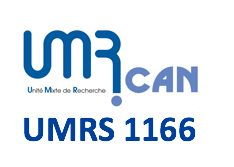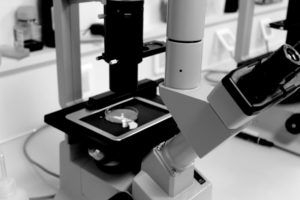
Wilfried Le Goff, Responsable de l’unité de recherche 1166
Quelques mots sur la stratégie de l’unité , par Wilfried LE GOFF, Professeur de médecine et chercheur, Responsable de l’unité
Créée en 2014 et renouvelée en 2019, l’UMR 1166-ICAN regroupe sous une même enseigne 5 équipes indépendantes dédiées à la recherche sur les maladies cardiovasculaires et métaboliques, avec des expertises complémentaires et reconnues internationalement en génomique, biostatistique, biologie moléculaire et cellulaire, physiologie et pharmacologie. L’UMR est située au sein de la Faculté de Médecine de l’Hôpital Pitié-Salpêtrière, l’un des plus grands sites hospitalo-universitaires de recherche en France et parmi les plus grands d’Europe. Au cours des 15 dernières années, le site a connu une croissance et des investissements majeurs dans la recherche cardiaque, vasculaire et métabolique, couplés à une croissance parallèle des efforts de recherche fondamentale. Le campus a également développé les plateformes nécessaires à la recherche moderne en biologie moléculaire, cellulaire, physiologique et des systèmes. Un centre d’investigation clinique Inserm assure le pont entre la recherche fondamentale et la recherche clinique. L’unité a joué un rôle majeur dans la création de l’IHU-ICAN (Institut Hospitalo-Universitaire-Institut des Maladies Cardiovasculaires et de la Nutrition), l’un des 6 IHU créés en France. L’IHU-ICAN dispose de plateformes uniques de recherche clinique et de bio-ressources humaines dans le domaine des maladies cardiovasculaires et de la nutrition. Nous sommes également membre de la Fédération des Recherches Interdisciplinaires Pitié-Salpêtrière – 4 unités de recherche, 400 chercheurs et personnels, mutualisation des plateformes, vie scientifique pluridisciplinaire -.
Notre projet scientifique s’organise autour de quatre axes principaux qui sont les parties impliquées de notre campus et par lesquels nous avons apporté des contributions scientifiques significatives. Il s’agit notamment de l’athérothrombose et des maladies coronariennes, de la génomique des cardiomyopathies et de l’insuffisance cardiaque, de la fibrillation auriculaire et des arythmies cardiaques, des lipides et des maladies vasculaires athéroscléreuses.
Les maladies cardiovasculaires et les troubles métaboliques, deux causes majeures de mortalité et de morbidité dans les pays modernes, partagent des caractéristiques physiopathologiques communes. Le plus souvent, les maladies cardiovasculaires et métaboliques sont dues à de multiples facteurs dont la nutrition, le mode de vie, l’environnement, la génétique et l’épigénétique qui interviennent au début de la maladie et/ou au cours de sa progression. Les maladies cardiovasculaires et les troubles métaboliques résultant de processus évolutifs qui appartiennent de multiples voies au niveau tissulaire, organique et inter-organes partageant des voies initiales et des dysfonctionnements communs. Le caractère « silencieux » de leur évolution initiale se traduit par un diagnostic à un stade tardif suite à un accident vasculaire cérébral, un infarctus du myocarde, une insuffisance cardiaque ou une mort subite. Nos 2 objectifs majeurs sont donc 1/ d’identifier de nouveaux phénotypes individuels avec des voies communes qui seront ciblées pour une intervention ainsi que d’intégrer le caractère multifactoriel et multi-organique de ces troubles et 2/ l’identification des stades moléculaires et cellulaires les plus précoces, ce qui permet une prévention précoce pour retarder l’apparition de la maladie ou de ses complications. De plus, le défi de la recherche sur les maladies cardiovasculaires et métaboliques est d’intégrer la grande quantité de données et d’informations générées par les différents domaines de recherche dans des schémas transposables et pertinents pour la physiopathologie de ces maladies. Pour atteindre ces objectifs, l’UMR 1166 a développé des approches de recherche multidisciplinaires et intégrées ainsi que des liens étroits avec la recherche clinique et un accès à des bio-ressources humaines et à des cohortes de patients uniques.



